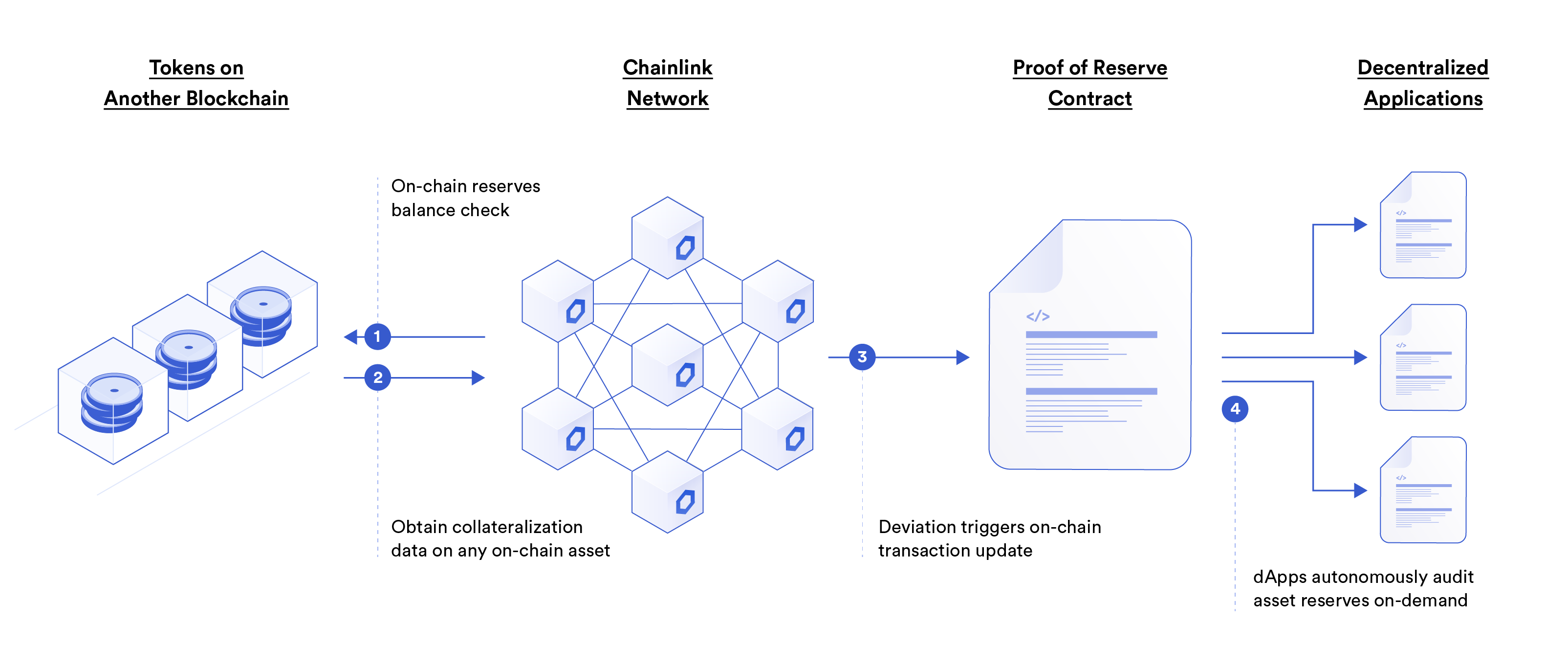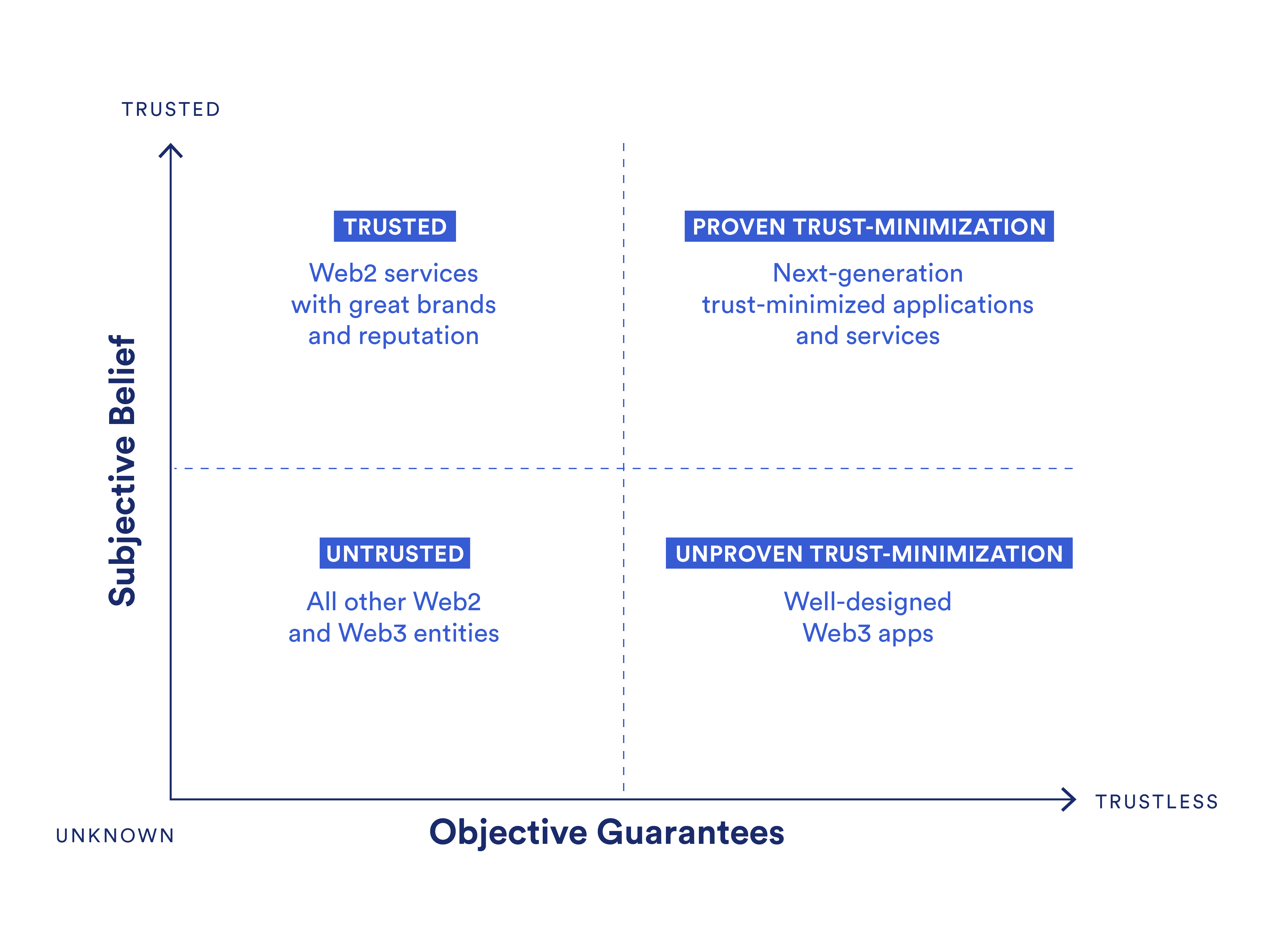7 Must-Reads on Proof of Reserves
With the collapse of a once-trusted exchange, many users are migrating to self-custodial wallets and using DeFi protocols to access trust-minimized financial applications. No longer can an institution’s reputation or brand be taken as a guarantee of safety. Users are demanding proof, not promises.
To meet this surging demand for cryptographic truth, centralized institutions are increasingly offering proof of reserves—a way to prove the stability and presence of reserve assets and show users that they are solvent and have ample liquidity.
However, it’s not just exchanges and financial institutions that need proof of reserves—stablecoins, cross-chain tokens, and tokenized real-world assets all benefit from the ability to verify their backing. Engaging in the Web3 ecosystem still requires a significant amount of trust, meaning there are countless ways to improve, decentralize, and trust-minimize the existing Web3 landscape using proof of reserves solutions.
Here are 7 must-reads to understand how proof of reserves works, why there’s no one-size-fits-all solution, and where centralized points of trust exist in the Web3 ecosystem.
1. Proof of Reserves in 5 Tweets
#Crypto is at a crossroads.
Will crypto continue to repeat the mistakes of the traditional black-box financial industry? Or will a better system emerge?
A better system is possible, & Proof of Reserve is one way #Chainlink is providing the transparency that users demand.
🧵👇
— Chainlink (@chainlink) November 10, 2022
In just five posts, this Chainlink tweet thread synthesizes what proof of reserves means, why it’s needed, the value it provides users, and what can happen when institutions don’t use proof of reserves.
2. The Increased Demand for Proof of Reserves
In this Nasdaq Trade Talks video, Chainlink Co-Founder Sergey Nazarov explains why proof of reserves is here to stay:
“Systemic financial risk, contagion risk, counterparty risk are fundamental problems to all financial markets […] I think this [FTX’s insolvency] is a big enough jump in everybody’s attention that proof of reserves will become widely adopted.”
3. What Is Proof of Reserves?
A primer on why proof of reserves is needed and how it works, specifically in the context of on-chain ecosystems. Discover how proof of reserves can provide greater transparency into off-chain assets brought to on-chain ecosystems.
4. Stablecoins and Proof of Reserves
Today, stablecoins represent more than $140 billion dollars in value—more than $130 billion of which is backed by off-chain reserves. This article explores the clear opportunity for increased stablecoin transparency using proof of reserves.
5. Cross-Chain Assets and Proof of Reserves
 Read this article to understand how proof of reserves can not only provide transparency into billions of monthly bridge volume for wrapped assets but also how reserve data can help mitigate systemic and contagion risk within cross-chain assets.
Read this article to understand how proof of reserves can not only provide transparency into billions of monthly bridge volume for wrapped assets but also how reserve data can help mitigate systemic and contagion risk within cross-chain assets.
6. The Importance of Proving Exchange Reserves
1/ With the collapse of a once trusted exchange, an unprecedented number of users are migrating to self-custodial wallets.
However, risk still exists in #DeFi with entities like exchanges minting wrapped tokens.#Chainlink Proof of Reserve is critical for reducing this risk.
— Chainlink (@chainlink) November 15, 2022
This tweet thread breaks down the importance of providing actually useful proof of reserves data for exchanges by tracking liabilities, and why Chainlink Proof of Reserve was first built to help safeguard DeFi against systemic risks.
7. Creating New Standards of Trust-Minimization
Why use proof of reserves? Understand the larger context behind this emerging movement toward transparency by going beyond exchanges to explore the fundamental societal shift that Web3 is pushing forward.
More Resources
- Chainlink Proof of Reserve
- Proof of Reserve YouTube playlist
- The Hitchhiker’s Guide to Chainlink Proof of Reserve
- Vitalik Buterin on Proof of Solvency
To hear the latest news and announcements about Chainlink services, subscribe to the Chainlink newsletter and follow the official Chainlink Twitter.



